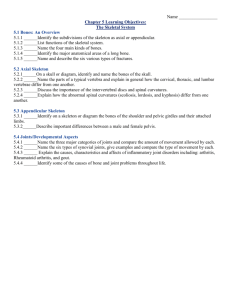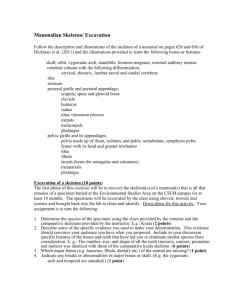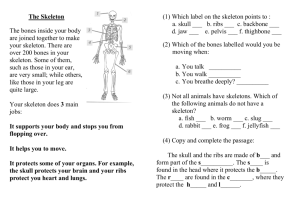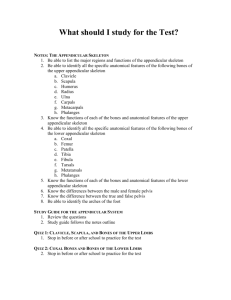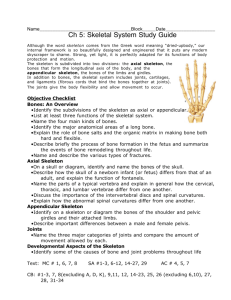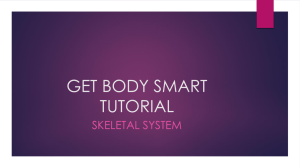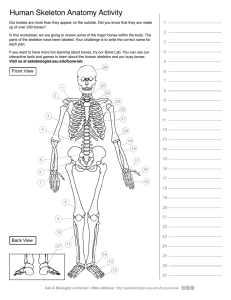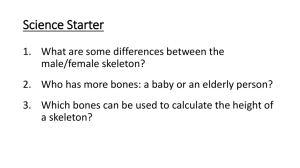Lab10_Homologous structures - Jocha
advertisement
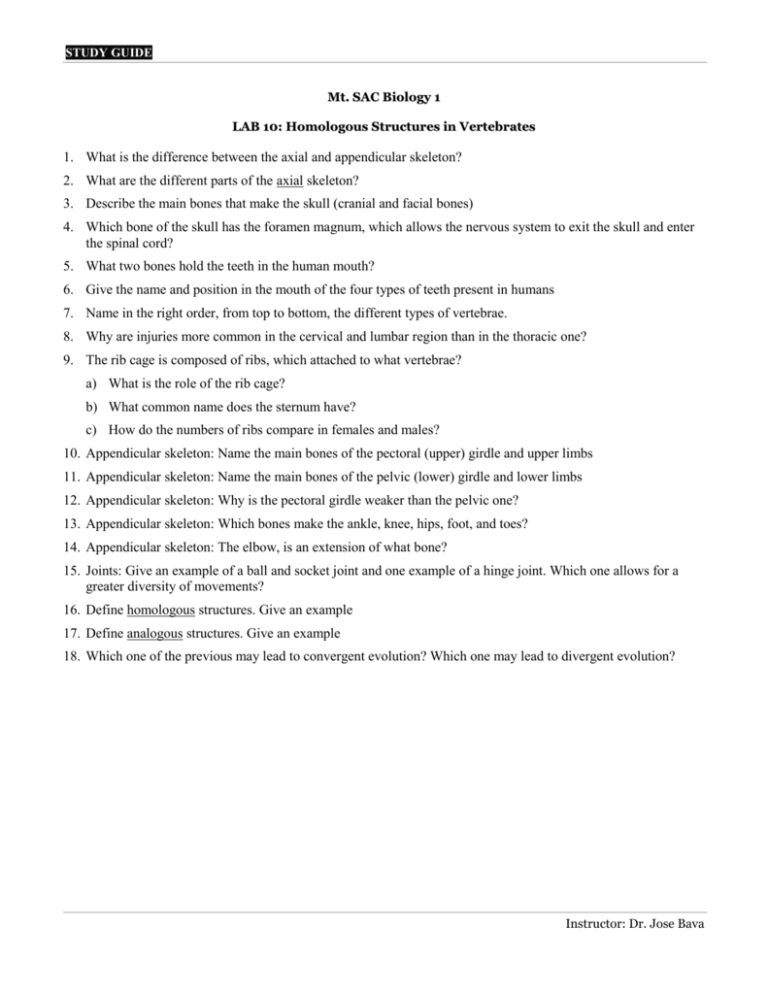
STUDY GUIDE Mt. SAC Biology 1 LAB 10: Homologous Structures in Vertebrates 1. What is the difference between the axial and appendicular skeleton? 2. What are the different parts of the axial skeleton? 3. Describe the main bones that make the skull (cranial and facial bones) 4. Which bone of the skull has the foramen magnum, which allows the nervous system to exit the skull and enter the spinal cord? 5. What two bones hold the teeth in the human mouth? 6. Give the name and position in the mouth of the four types of teeth present in humans 7. Name in the right order, from top to bottom, the different types of vertebrae. 8. Why are injuries more common in the cervical and lumbar region than in the thoracic one? 9. The rib cage is composed of ribs, which attached to what vertebrae? a) What is the role of the rib cage? b) What common name does the sternum have? c) How do the numbers of ribs compare in females and males? 10. Appendicular skeleton: Name the main bones of the pectoral (upper) girdle and upper limbs 11. Appendicular skeleton: Name the main bones of the pelvic (lower) girdle and lower limbs 12. Appendicular skeleton: Why is the pectoral girdle weaker than the pelvic one? 13. Appendicular skeleton: Which bones make the ankle, knee, hips, foot, and toes? 14. Appendicular skeleton: The elbow, is an extension of what bone? 15. Joints: Give an example of a ball and socket joint and one example of a hinge joint. Which one allows for a greater diversity of movements? 16. Define homologous structures. Give an example 17. Define analogous structures. Give an example 18. Which one of the previous may lead to convergent evolution? Which one may lead to divergent evolution? Instructor: Dr. Jose Bava
